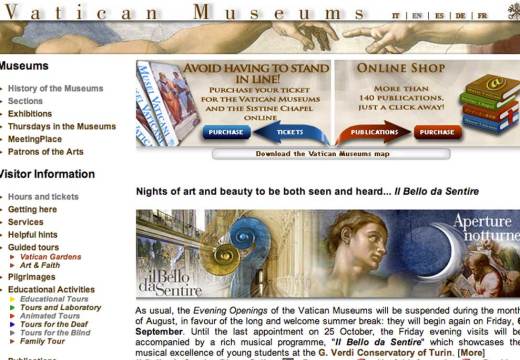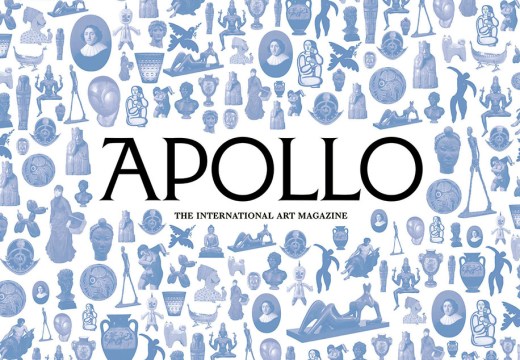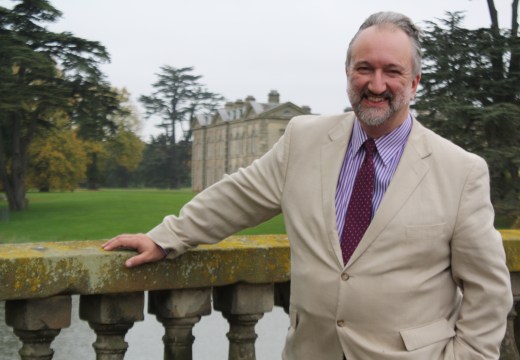This summer Michael Landy (b. 1963) brings giant robots to the National Gallery in London. The culmination of his tenure as artist in residence at the museum, ‘Saints Alive’ (until 24 November), represents a departure for this traditional institution. As an artist with an appetite for destruction, Landy does not disappoint.
Largely left to his own devices, Landy’s only brief was to respond to the collection. The results are both spectacular and violent. A towering and mechanical Saint Apollonia (2013), plucked from a 1506 Lucas Cranach painting, greets the audience on arrival. With the push of a button, she proceeds to smash herself in the face with a pair of metal pliers. Never one for subtlety, Landy’s reanimated martyrs revisit all manner of early Christian torture and execution. In an otherwise sedate environment, the scale, brutality and deafening sounds of metal-on-metal are genuinely shocking.
Indeed, amid safety concerns, only 30 people may enter the exhibition at any one time. Despite any literal risks, Landy actually plays it relatively safe. Largely drawing on painting before Raphael, the source material predates the cult of personality bequeathed to us by the likes of Dürer and Michelangelo. This medieval and early Renaissance art is also sufficiently far removed from the distractions of post-Reformation politics, and as such is ripe for appropriation.
As a self-confessed newcomer to the Old Masters, Landy’s response to the collection reveals the enduring appeal of the macabre in Christian art. Clearly preoccupied with motifs of suffering, Landy’s sculptures, such as Saint Jerome (2013), who repeatedly beats himself in the chest with a rock, dwell on the pervasive and ritualised suffering in Christian doctrine. Yet here, it is we who become the torturers. Implicated in the violence, ‘innocent’ bystanders can no longer simply observe the suffering from the safe distance of an Old Master hanging on the William Morris wallpaper.
Despite all the movement and commotion, the figures in ‘Saints Alive’ are very much dead. Over-sized, disembodied and conspicuously mechanical, Landy’s automatons appear less ‘alive’ than the similarly gruesome, Spanish polychrome sculptures that featured in the gallery’s ‘Sacred Made Real’ exhibition of 2009. Rather than resurrection, Landy’s practice is all about deconstruction. Multi-Saint (2013), for example, is a Frankenstein’s monster of borrowed body parts. Saint Peter Martyr’s head and Saint Michael’s legs are joined at the hip by a mass of cogs, chains, wheels and Saint Lucy’s plucked out eyes, which sit neatly on a plate.
In the wake of previous landmark shows, such as Break Down (2001) and Art Bin (2010), Landy’s latest offering has a lot to live up to. However, ‘Saints Alive’ falls short when the artist resorts to kitsch and humour. Donation Box (2013), Spin the Saint Catherine Wheel and Win the Crown of Martyrdom (2013) and Saint Francis Lucky Dip (2013), a giant headless monk that distributes t-shirts with ‘Poverty, Chastity and Obedience’ emblazoned on the front, are all amusing, but essentially glib visual puns resembling theme park props.
More successful are Landy’s many works on paper, which are, unsurprisingly, overshadowed by the robots. And this is a shame, as he clearly has a talent for collage and line making. The likes of Crivelli and Cosimo Tura, with their solid and linear style, naturally translates into Landy’s graphic works. His Terry Gilliamesque, ‘cut and paste’ technique, in works such as Nationalised Saints (2013), critique the concept of author as creator and remind us that much of the medieval art in our public museum is fragmented and decontextualised.
Another highlight is Saint Catherine Wheel Dump (2012), which resembles Paul Nash’s Totes Meer (Dead Sea) (1940-41). Devoid of human presence, the landscape is constructed entirely from strewn and broken Catherine wheels taken from the collection. Landy’s neo-gothic asymmetry – a rejection of the idealised beauty that pervaded later painting – successfully engages with the source material and reveals a surprising commonality between pre-modern and postmodern art.
The National Gallery has taken a risk with ‘Saints Alive’ – the opening weeks alone have been plagued by malfunctioning sculptures, large queues and irate visitors – but ultimately the risk has paid off. Beneath the veneer of misplaced humour, mayhem and the carnival atmosphere, Landy is an unfailingly serious artist.
‘Saints Alive’ by Michael Landy runs at the National Gallery, London until 24 November 2013.
Unlimited access from just $16 every 3 months
Subscribe to get unlimited and exclusive access to the top art stories, interviews and exhibition reviews.














![Masterpiece [Re]discovery 2022. Photo: Ben Fisher Photography, courtesy of Masterpiece London](http://www.apollo-magazine.com/wp-content/uploads/2022/07/MPL2022_4263.jpg)
It’s time for the government of London to return to its rightful home